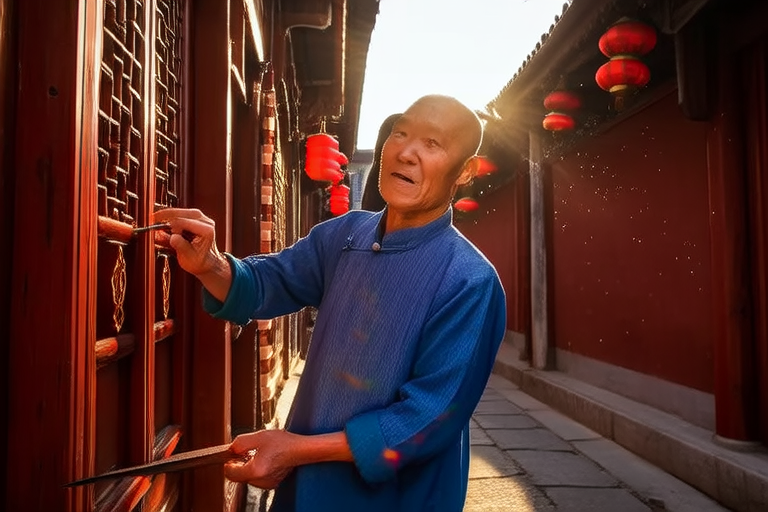Discovering Time-Honored Customs in Ancient Cities

Discovering Time-Honored Customs in Ancient Cities
Introduction
Ancient cities, with their enduring structures and timeless charm, stand as living testaments to humanity’s rich cultural heritage. These cities, often dating back thousands of years, are not just repositories of history but also vibrant centers where time-honored customs are meticulously preserved and practiced. Exploring these customs offers invaluable insights into the diverse tapestry of human civilization, providing a window into the beliefs, values, and daily lives of people across generations.
The preservation of such traditions is crucial for understanding global cultural diversity. From the bustling streets of Kyoto to the serene alleys of Fez, these ancient cities are home to unique practices that have been passed down through generations. By delving into these customs, we can appreciate the continuity and evolution of human culture. Some notable examples include the vibrant festivals of Varanasi, the intricate craftsmanship of Timbuktu, and the spiritual rituals of Cusco.
Historical Context
Each of these ancient cities has a distinct historical background that has shaped its cultural landscape. For instance, Kyoto, Japan, was once the capital of Japan for over a thousand years, serving as a hub for political, cultural, and religious activities. This long-standing role has made it a repository of Japanese traditions, including tea ceremonies, geisha performances, and elaborate festivals like Gion Matsuri.
In contrast, Timbuktu, located in present-day Mali, flourished during the height of the Mali Empire as a center of Islamic learning and trade. Its legacy is evident in the preservation of ancient manuscripts and the continued practice of Islamic teachings. Similarly, Cusco, Peru, was the heart of the Inca Empire and remains a site of profound archaeological and cultural significance. The city continues to celebrate Incan heritage through festivals like Inti Raymi, which honors the sun god.
Customs and Traditions
The customs and traditions of these ancient cities are deeply embedded in their daily lives. In Kyoto, the annual Gion Matsuri festival features elaborate floats and parades, showcasing traditional costumes and music. The festival serves as a celebration of the city’s cultural heritage and is a testament to the resilience of its people. Similarly, in Timbuktu, the preservation of ancient manuscripts is a revered tradition. Local scholars and scribes continue to maintain these priceless documents, ensuring that the knowledge and wisdom of past generations are not lost.
In Cusco, the Inti Raymi festival is a grand spectacle that commemorates the winter solstice and pays homage to the Incan sun god. The festival includes reenactments of Incan rituals, colorful processions, and offerings to the gods. These practices not only honor the past but also foster a sense of community and shared identity among the residents.
Preservation Efforts
Local authorities and organizations play a pivotal role in preserving these customs. In Kyoto, the government has implemented measures to protect traditional arts and crafts, ensuring that artisans can continue their work without economic hardship. In Timbuktu, efforts are being made to digitize ancient manuscripts to safeguard them from deterioration. However, these preservation efforts face numerous challenges, including funding constraints and the impact of globalization.
Tourism also plays a dual role in the preservation of these customs. While it provides financial support and raises awareness, it can also pose threats to the authenticity of these traditions. Visitors must be mindful of their impact and respectful of local practices. Engaging with locals, supporting local businesses, and participating in cultural events can help sustain these traditions for future generations.
Impact on Daily Life
The customs and traditions of these ancient cities significantly influence the daily lives of their residents. In Kyoto, the practice of tea ceremonies is not just a cultural ritual but a way of life. The meticulous preparation and consumption of tea promote mindfulness and tranquility. Similarly, in Timbuktu, the study of ancient manuscripts is an integral part of the educational system, fostering a deep appreciation for Islamic scholarship.
In Cusco, the influence of Incan heritage is visible in the city’s architecture, cuisine, and art. Traditional textiles, pottery, and music are integral to the local culture, reflecting the rich artistic heritage of the region. These traditions shape the education, art, and cuisine of the city, creating a unique and vibrant cultural identity.
Visitor Experiences
Visitors to these ancient cities can expect to immerse themselves in a world of rich cultural experiences. In Kyoto, tourists can participate in tea ceremonies, visit historic temples, and witness the Gion Matsuri festival. In Timbuktu, visitors can explore the ancient manuscripts and learn about Islamic scholarship from local scholars. In Cusco, travelers can attend the Inti Raymi festival, visit archaeological sites, and sample traditional Peruvian cuisine.
To respectfully engage with these customs, visitors should approach these experiences with an open mind and a willingness to learn. Participating in cultural events, supporting local artisans, and respecting local practices can help ensure that these traditions remain vibrant and relevant. Recommended activities include visiting museums, attending workshops, and joining guided tours that offer insights into the local customs and traditions.
Conclusion
The time-honored customs of ancient cities are essential for shaping their identities and preserving their cultural heritage. These traditions provide a link between the past and the present, offering valuable lessons about human resilience and adaptability. By exploring these customs, we can gain a deeper appreciation for the diversity and richness of human culture.
It is crucial to preserve and respect these traditions for future generations. Encouraging sustainable tourism, supporting local initiatives, and fostering cross-cultural understanding can help ensure that these customs continue to thrive. We encourage readers to consider visiting these ancient cities to experience these customs firsthand and contribute to their preservation.